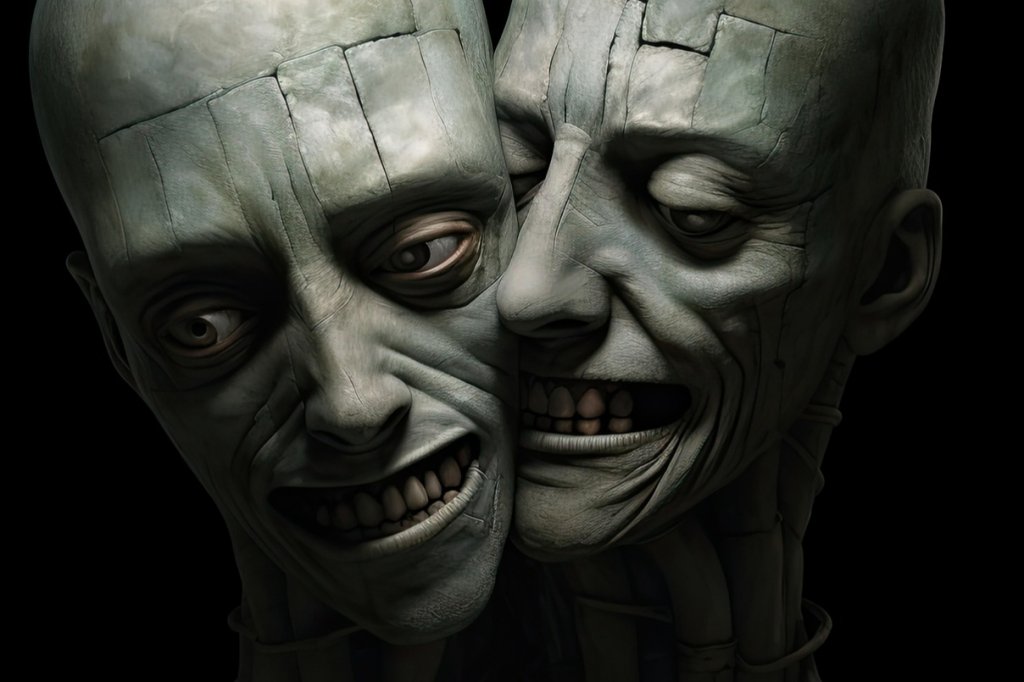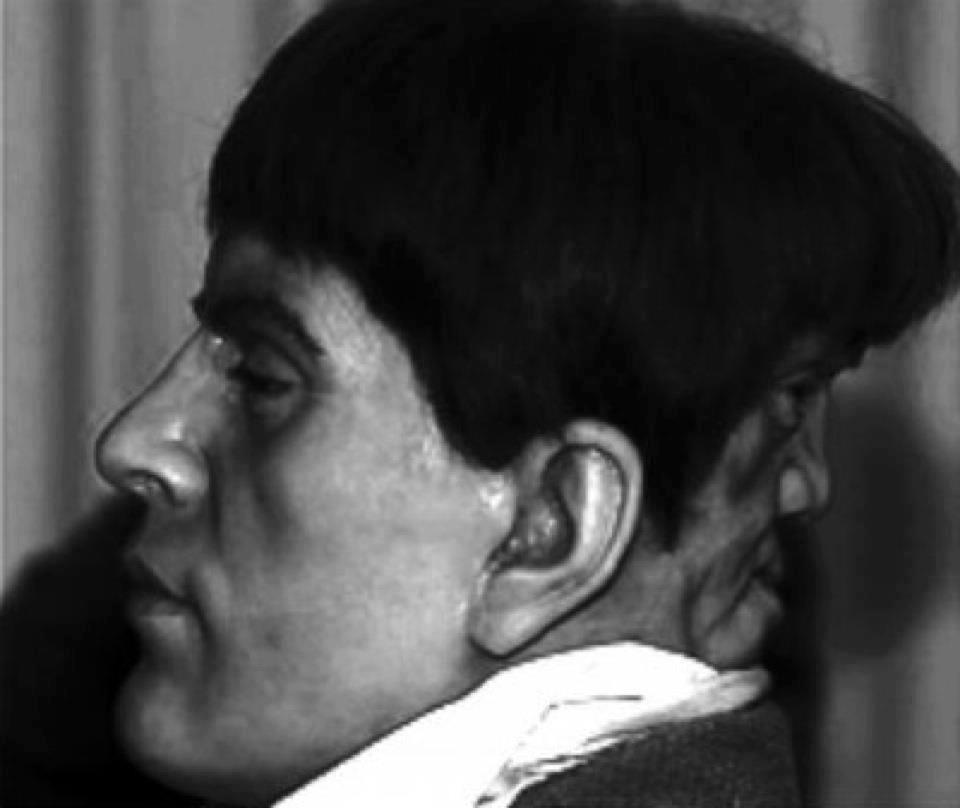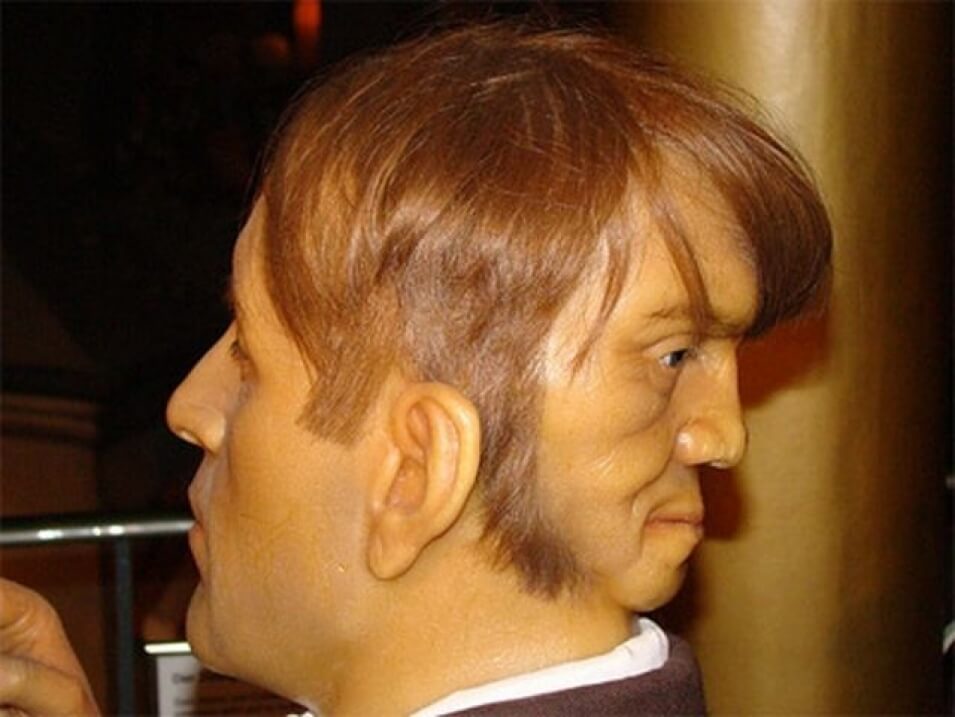Edward Mordrake was born in the 19th century, heir to an English peerage. But there was more to Mordrake than first greeted the eye.
He had an extra face on the back of his head. Apparently, this duplicate face could not see, or speak out loud, but was said to whisper hellish ramblings to Mordrake at night.
According to the legend, Edward Mordrake committed suicide at age 23. Was there any truth behind this story and does this medical condition even exist? Let’s find out.
The Man With Two Faces
Related article:- Who put Bella in the Wych elm?
Edward Mordrake lived in complete seclusion, refusing all visitors, even members of his own family. He was a young man who had a lot going for him, a profound scholar and talented musician.
He was said to be graceful, with a youthful, handsome look, but tarnished by his extra face.
Mordrake’s doctors, Treadwell and Manvers, described the face as “occupying only a small portion of the posterior part of the skull, yet exhibiting every sign of intelligence, of a malignant sort. However, it would be seen to smile and sneer while Mordrake wept.”

The host caused great distress to Mordrake, who rejected his title and locked himself away. In Mordrake‘s suicide note, he requested that his evil twin be surgically removed at the autopsy so that it couldn’t accompany him into the afterlife.
Mordrake‘s request was to be buried in a sewer. Sir Edward Mordrake lives on through legend, theatrical interpretations, wax, and song.
And there are even rumors of the story being made into a Hollywood feature film. So is there any truth behind this twisted tale?
Fact Check
Snopes.com, formally known as the Urban Legends Reference Pages, is one of the first online fact-checking websites. They rate the story as false for the following reasons.
In Gould and Pyle’s Anomalies and Curiosities of Medicine, an encyclopedic collection of rare and extraordinary cases, which was first published in 1896, brought the story of Mordrake to life.
But their version has a few holes in it. The write-up about Mordrake was quoted from what the authors describe as, lay sources, whereas stories they published about the life of Joseph Merrick, the Elephant Man, are drawn from actual medical journals.

It also seems to be unrealistically dramatic, while hardly mentioning science at all. The origin of a black-and-white photograph of Mordrake and his devil twin, which the book published, is unknown.
The image exhibits greater resolution than what is typically seen in photographic reproductions of the late 1800s.
Other Cases
Ok, so it’s an interesting story, but maybe it’s been embellished or is even the work of medical fiction. So what about other cases of people who have two faces?
One of the most famous is that of Pasqual Pinon, The Two-Headed Mexican who was a featured attraction with the Sells-Floto Circus in the early 1900s.
A railroad worker from Texas, Pinon caught the eye of the circus promoter as he had a large benign cyst or tumor at the top of his head. The story went, that Pinon’s cyst was a secondary immobile head.
Its mouth was constantly agape and its eyes blank and expressionless, the lack of movement was attributed to being paralyzed after Pinon suffered a stroke at the age of 20.
Pinon’s rather dull performance consisted of him sitting and simply lifting his chin into the air occasionally, to better display the secondary head.
Was there any basis for the truth? Pinon seems to have been a real person, but this story also seems to be false. The second head of Pinon was a fake.
Dipper Sopes
So is it even possible to be born with two faces? The medical term is known as craniofacial duplication or diprosopus, a variant of conjoined twins.
The condition is rare and according to the US National Library of Medicine, to date only 35 cases have been reported. The earliest known report of diprosopus has been credited to Ambroise Paré in the 16th century.

But in recent times the most famous and legitimate case of a human with diprosopus is that of Lali Singh, an infant girl born near Delhi, India, in March of 2008. Lali survived her birth and was able to breathe on her own.
She had two sets of eyes, two noses, and two mouths. Instead of being reviled and shunned, the anomaly gave Lali god-like status in the village as the community believed her to be the reincarnation of several Hindu deities.
Hundreds of people flocked to the family’s dilapidated brick house to worship her and seek blessings. Lali, unfortunately, died at two months old, due to dehydration related to feeding issues, caused by her cleft palate, and ultimately cardiac failure.
Cranial Pagis
A similar condition to diprosopus is craniopagus parasiticus, an extremely rare condition occurring in about 4 to 6 out of every 10,000,000 births. Twins are born and joined at the head.
Their skulls are fused and only one twin develops a functioning body while the other does not. A case of craniopagus parasiticus drew worldwide attention in 2006 after The Oprah Show shared the story of Egyptian baby Manar Maged.
The child was born on March 30, 2004, with a second head and face attached to Manar’s skull. The second head could blink and smile, and even had a separate brain.
The family named it Islaam. But Islaam was in effect a parasitic twin, relying on Manar’s organs to sustain life, adding a dangerous burden to her heart.
The weight would also prevent Manar from moving around, without help. This led to a decision to detach Islaam. On February 19, 2005, a 13-hour surgery was performed at Benha Children’s Hospital north of Cairo, Egypt.
The surgery was successful and Manar was released from intensive care in March 2005. However, Manar went on to develop hydrocephaly, which is an accumulation of fluid in her brain.
She passed away on March 25, 2006, from a brain infection shortly before her second birthday. The duplicated human face, the duality of human nature, is a powerful image, something represented by Janus, the Roman god of beginnings, endings, transitions and time.
And though the man with two faces may never have existed as the story is told, there are certainly cases of double-headed births and two-faced abnormalities that have a scientific basis.
So, do you know of any interesting cases that we didn’t mention today? Let us know in the comments.
